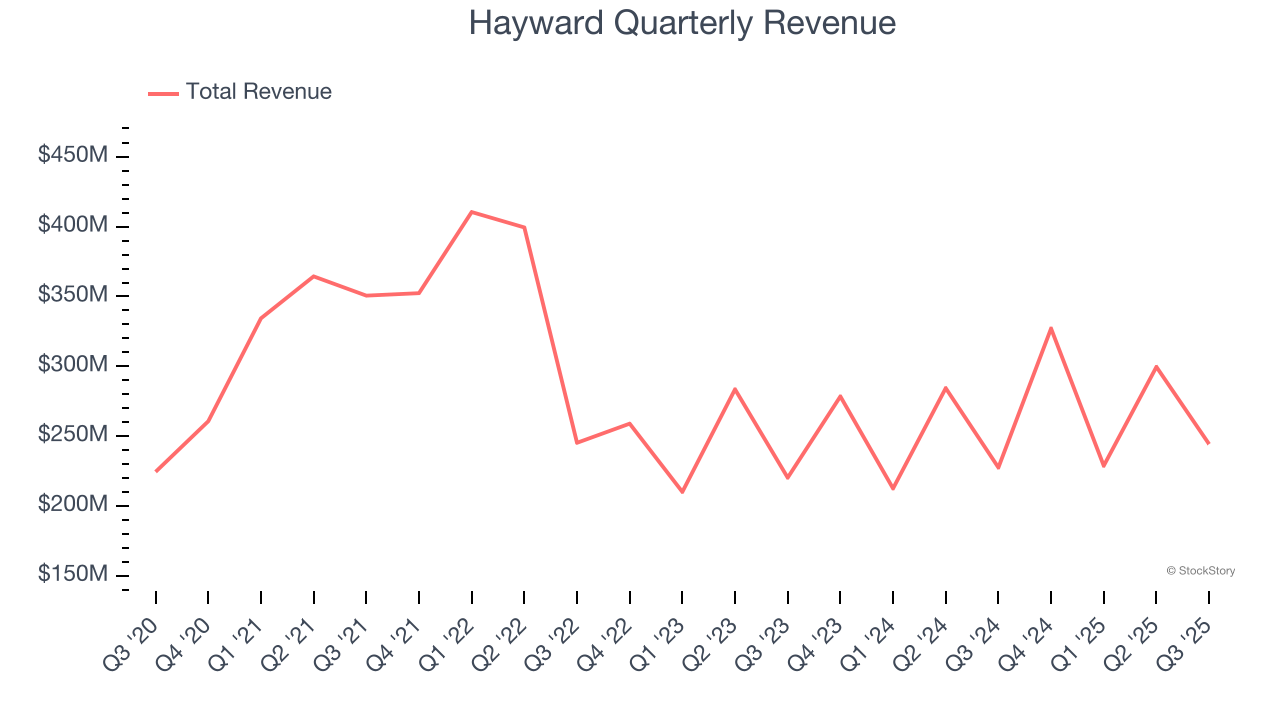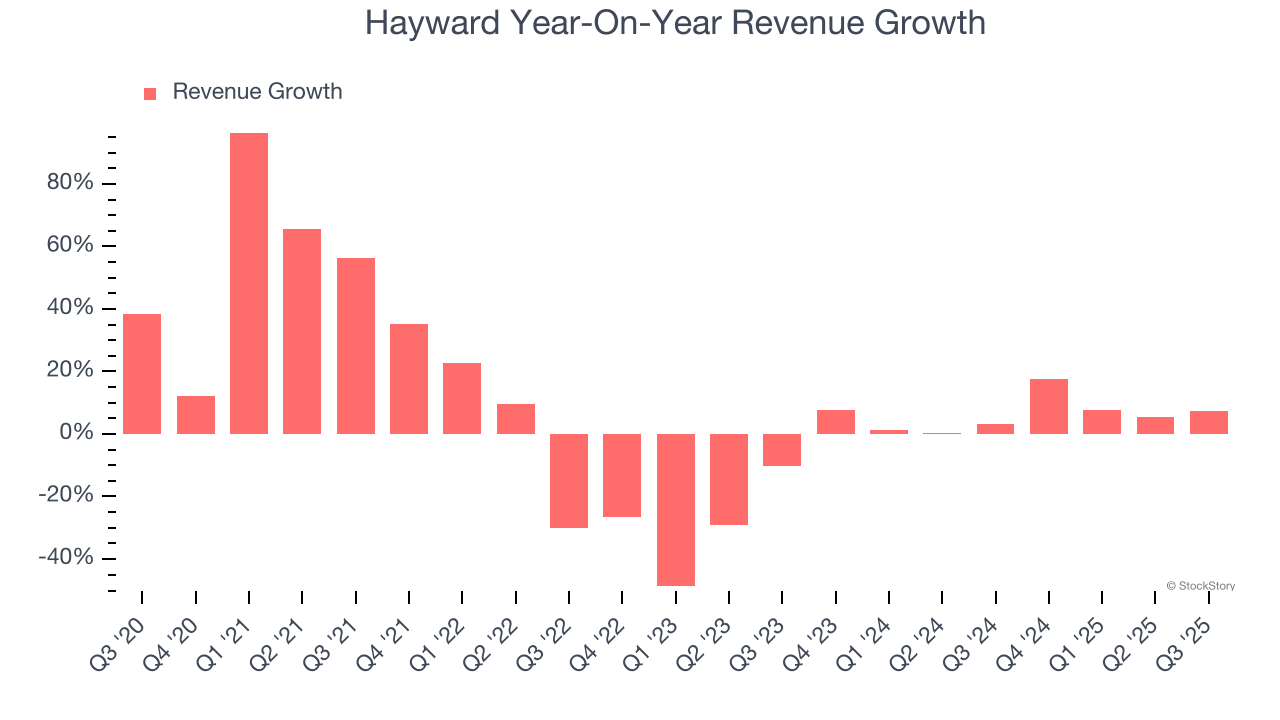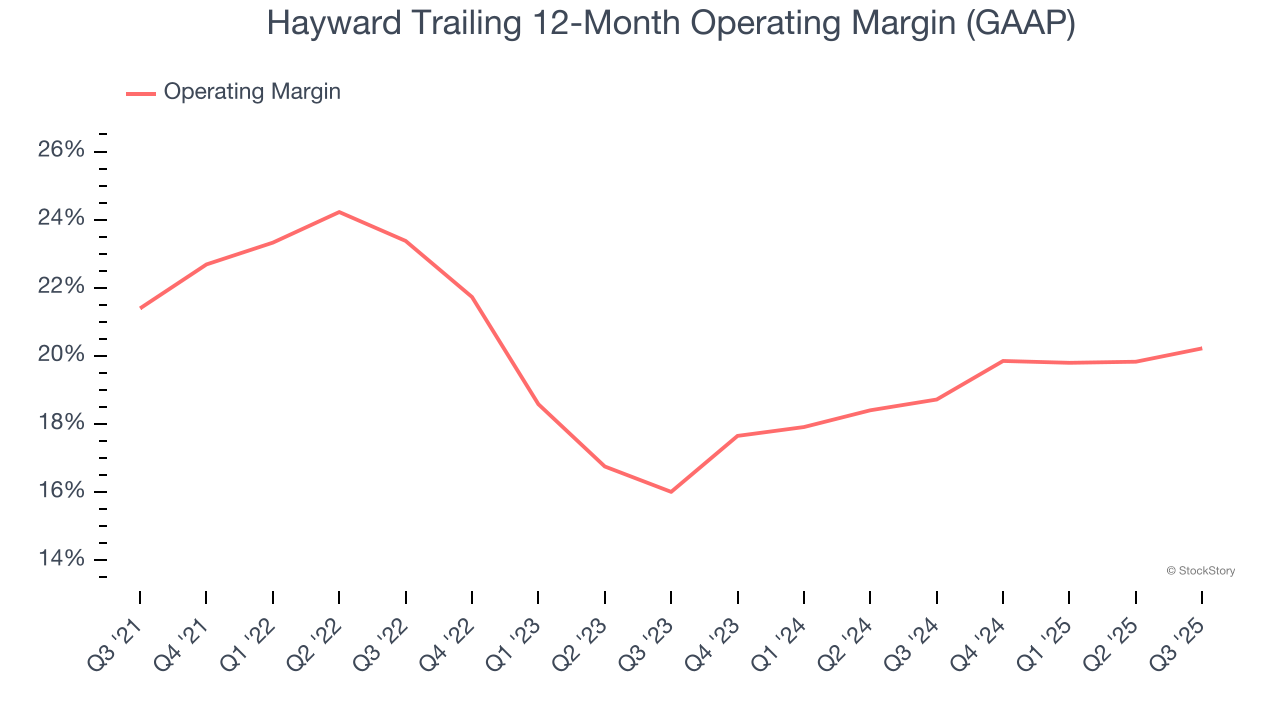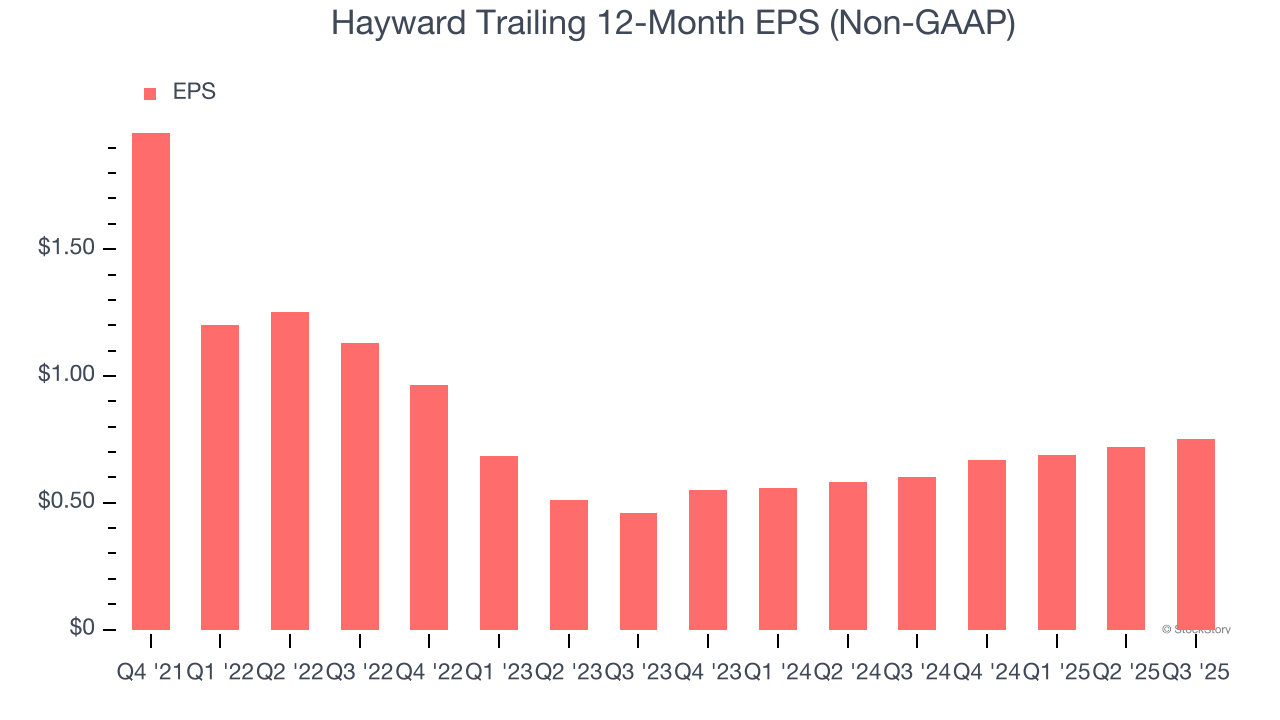
Pool equipment and automation systems manufacturer Hayward Holdings (NYSE:HAYW) reported Q3 CY2025 results topping the market’s revenue expectations, with sales up 7.4% year on year to $244.3 million. The company’s full-year revenue guidance of $1.10 billion at the midpoint came in 1.1% above analysts’ estimates. Its non-GAAP profit of $0.14 per share was 15.8% above analysts’ consensus estimates.
Is now the time to buy Hayward? Find out by accessing our full research report, it’s free for active Edge members.
Hayward (HAYW) Q3 CY2025 Highlights:
- Revenue: $244.3 million vs analyst estimates of $231.5 million (7.4% year-on-year growth, 5.5% beat)
- Adjusted EPS: $0.14 vs analyst estimates of $0.12 (15.8% beat)
- Adjusted EBITDA: $59.07 million vs analyst estimates of $53.03 million (24.2% margin, 11.4% beat)
- The company lifted its revenue guidance for the full year to $1.10 billion at the midpoint from $1.09 billion, a 1.6% increase
- EBITDA guidance for the full year is $294.5 million at the midpoint, above analyst estimates of $287.1 million
- Operating Margin: 16.8%, up from 14.7% in the same quarter last year
- Free Cash Flow Margin: 35.5%, up from 26% in the same quarter last year
- Market Capitalization: $3.32 billion
CHARLOTTE, N.C.--(BUSINESS WIRE)--Hayward Holdings, Inc. (NYSE: HAYW) (“Hayward” or the “Company”), a global designer, manufacturer and marketer of a broad portfolio of pool and outdoor living technology, today announced financial results for the third quarter ended September 27, 2025 of its fiscal year 2025.
Company Overview
Credited with introducing the first variable-speed pool pump, Hayward (NYSE:HAYW) makes residential and commercial pool equipment and accessories.
Revenue Growth
Examining a company’s long-term performance can provide clues about its quality. Any business can experience short-term success, but top-performing ones enjoy sustained growth for years. Unfortunately, Hayward’s 5.4% annualized revenue growth over the last five years was tepid. This was below our standard for the industrials sector and is a poor baseline for our analysis.

We at StockStory place the most emphasis on long-term growth, but within industrials, a half-decade historical view may miss cycles, industry trends, or a company capitalizing on catalysts such as a new contract win or a successful product line. Hayward’s annualized revenue growth of 6.3% over the last two years aligns with its five-year trend, suggesting its demand was consistently weak. 
This quarter, Hayward reported year-on-year revenue growth of 7.4%, and its $244.3 million of revenue exceeded Wall Street’s estimates by 5.5%.
Looking ahead, sell-side analysts expect revenue to grow 3.2% over the next 12 months, a deceleration versus the last two years. This projection doesn't excite us and suggests its products and services will face some demand challenges.
Here at StockStory, we certainly understand the potential of thematic investing. Diverse winners from Microsoft (MSFT) to Alphabet (GOOG), Coca-Cola (KO) to Monster Beverage (MNST) could all have been identified as promising growth stories with a megatrend driving the growth. So, in that spirit, we’ve identified a relatively under-the-radar profitable growth stock benefiting from the rise of AI, available to you FREE via this link.
Operating Margin
Hayward has been a well-oiled machine over the last five years. It demonstrated elite profitability for an industrials business, boasting an average operating margin of 20.3%. This result isn’t surprising as its high gross margin gives it a favorable starting point.
Analyzing the trend in its profitability, Hayward’s operating margin decreased by 1.2 percentage points over the last five years. This raises questions about the company’s expense base because its revenue growth should have given it leverage on its fixed costs, resulting in better economies of scale and profitability.

This quarter, Hayward generated an operating margin profit margin of 16.8%, up 2.1 percentage points year on year. The increase was encouraging, and because its operating margin rose more than its gross margin, we can infer it was more efficient with expenses such as marketing, R&D, and administrative overhead.
Earnings Per Share
Revenue trends explain a company’s historical growth, but the long-term change in earnings per share (EPS) points to the profitability of that growth – for example, a company could inflate its sales through excessive spending on advertising and promotions.
Hayward’s full-year EPS dropped 159%, or 26.9% annually, over the last four years. We tend to steer our readers away from companies with falling revenue and EPS, where diminishing earnings could imply changing secular trends and preferences. If the tide turns unexpectedly, Hayward’s low margin of safety could leave its stock price susceptible to large downswings.

Like with revenue, we analyze EPS over a more recent period because it can provide insight into an emerging theme or development for the business.
Hayward’s EPS grew at an astounding 27.7% compounded annual growth rate over the last two years, higher than its 6.3% annualized revenue growth. This tells us the company became more profitable on a per-share basis as it expanded.
We can take a deeper look into Hayward’s earnings quality to better understand the drivers of its performance. Hayward’s operating margin has expanded over the last two years. This was the most relevant factor (aside from the revenue impact) behind its higher earnings; interest expenses and taxes can also affect EPS but don’t tell us as much about a company’s fundamentals.
In Q3, Hayward reported adjusted EPS of $0.14, up from $0.11 in the same quarter last year. This print easily cleared analysts’ estimates, and shareholders should be content with the results. Over the next 12 months, Wall Street expects Hayward’s full-year EPS of $0.75 to grow 5.8%.
Key Takeaways from Hayward’s Q3 Results
We were impressed by how significantly Hayward blew past analysts’ EBITDA expectations this quarter. We were also excited its revenue outperformed Wall Street’s estimates by a wide margin. Zooming out, we think this was a good print with some key areas of upside. The stock traded up 9% to $16.73 immediately following the results.
Hayward may have had a good quarter, but does that mean you should invest right now? When making that decision, it’s important to consider its valuation, business qualities, as well as what has happened in the latest quarter. We cover that in our actionable full research report which you can read here, it’s free for active Edge members.
